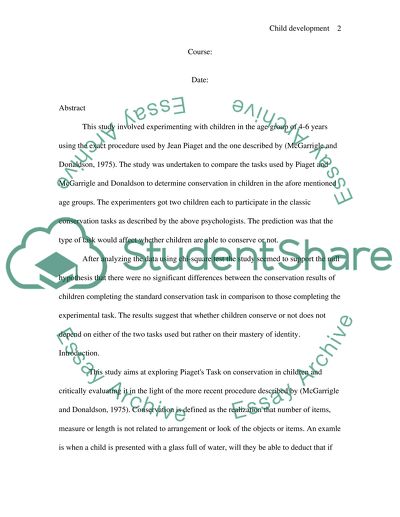Cite this document
(“Conservation tasks used by Piaget, James Mc Garrigle and Margaret Essay”, n.d.)
Retrieved de https://studentshare.org/miscellaneous/1514142-conservation-tasks-used-by-piaget-james-mc-garrigle-and-margaret-donaldson
Retrieved de https://studentshare.org/miscellaneous/1514142-conservation-tasks-used-by-piaget-james-mc-garrigle-and-margaret-donaldson
(Conservation Tasks Used by Piaget, James Mc Garrigle and Margaret Essay)
https://studentshare.org/miscellaneous/1514142-conservation-tasks-used-by-piaget-james-mc-garrigle-and-margaret-donaldson.
https://studentshare.org/miscellaneous/1514142-conservation-tasks-used-by-piaget-james-mc-garrigle-and-margaret-donaldson.
“Conservation Tasks Used by Piaget, James Mc Garrigle and Margaret Essay”, n.d. https://studentshare.org/miscellaneous/1514142-conservation-tasks-used-by-piaget-james-mc-garrigle-and-margaret-donaldson.


